Lamb Sundays and Mint Sauce, of Course
Mint sauce is a classic accompaniment for lamb, known for its fresh, tangy flavor that perfectly complements the rich taste of the meat. Traditionally made with simple ingredients like fresh mint, vinegar, and sugar, this sauce is a staple in many kitchens, especially during spring and summer when lamb is often at its best. Whether roasting, grilling, or braising lamb, mint sauce adds a vibrant, refreshing contrast that enhances the dish’s natural flavors.
In this post, I’ll explore the history behind mint sauce, how it’s evolved in different culinary traditions, and, most importantly, how to make your own at home. With just a handful of ingredients and a few easy steps, you can elevate your lamb dish from good to gourmet.
I’ll also share tips on adjusting the sweetness or acidity to suit your taste and pairing ideas to bring out the best in your lamb and mint sauce combination. So, whether preparing a family dinner or hosting a special occasion, this guide will help you create the perfect mint sauce for your lamb.
When I Was a Kid
Growing up with my mom, we ate a lot of lamb on Sundays. I asked my mom why that was, and she told me it was my Dad’s favorite meal. She would roast a leg of lamb with bone in on Sunday, and we would eat it for 3 nights in a row in one form or another, but always with some incredibly bright green mint jelly on the side.
My mom should have prepared a mint sauce, which I suggest you try here. It wasn’t her cooking style, but it could be challenging. You could not go to the supermarket and buy a bunch of fresh mint like you can today. We could have grown some in our garden, but I remember the garden was reserved for beets, carrots, parsley, potatoes, & tomatoes.
History of Mint Sauce
The history of mint sauce dates back centuries, with its origins rooted in British cuisine. Traditionally, it is thought to have been developed to complement lamb, a popular meat in England. The use of mint in cooking goes as far back as the Roman era when the herb was valued for its refreshing flavor and medicinal properties. However, the pairing of mint with lamb likely gained widespread popularity in Britain during the Middle Ages.
At the time, lamb was often served with acidic sauces, like verjuice (a sour juice made from unripe grapes or crabapples), to cut through the meat’s richness. Over time, mint, which grew abundantly in the English countryside, became the herb of choice for these sauces. Vinegar was added to the mint to preserve its freshness and provide a sharp contrast to the fatty, succulent lamb.
By the 19th century, mint sauce had firmly established itself as a British staple, especially during spring and Easter, when lamb is traditionally served. While mint sauce is most closely associated with British cooking, variations can also be found in Middle Eastern and Mediterranean cuisines, where mint and vinegar-based sauces are used to flavor meats.
Evolved
Mint sauce has evolved across various culinary traditions, adapting to local ingredients and flavor profiles. While its British origins remain closely associated with lamb, different regions have put their spin on the sauce, reflecting diverse tastes and culinary influences.
In British cuisine, mint sauce traditionally combines fresh mint, vinegar, sugar, and sometimes water. Its primary function is to balance the richness of lamb, especially during spring or Easter celebrations. Over time, modern versions have included tweaks, such as adding mustard or other herbs, but the basic recipe remains widely favored.
In Middle Eastern and Mediterranean cuisines, mint is commonly used with meats, but the sauces often incorporate yogurt or olive oil. For example, in Middle Eastern dishes like lamb kebabs, yogurt-mint sauces are prevalent, combining the freshness of mint with the creaminess of yogurt to create a cooling effect for grilled meats. These versions can also include garlic, lemon juice, and spices such as cumin, offering a richer, more complex flavor profile compared to the sharper British version.
In Indian cuisine, mint chutney—a tangier, spicier counterpart to the British sauce—is made with fresh mint, cilantro, green chili, lime, and sometimes yogurt. This chutney is served with meats, including lamb, often alongside naan or as a dipping sauce for appetizers like samosas.
Mint sauce’s evolution highlights the adaptability of mint as an herb and its ability to bridge diverse culinary traditions while still retaining its classic purpose: enhancing the flavors of lamb and other rich meats.
Mint Sauce for Lamb Recipe
Ingredients
- 1 bunch fresh mint about 4 ounces
- ⅓ cup boiling water
- 1 tablespoon sugar
- ⅓ cup cider vinegar
- ¼ teaspoon sea salt
Instructions
- Wash the mint leave and pat dry. Remove the leaves from the stem and discard stems. Finely chop the leaves.
- Start boiling the water.
- Put the mint in a small container and add the water to it.
- Stir in the sugar and let stand until the water is cooled off enough to touch it. This should take about 15 minutes.
- Stir in the cider vinegar and sea salt.
Notes
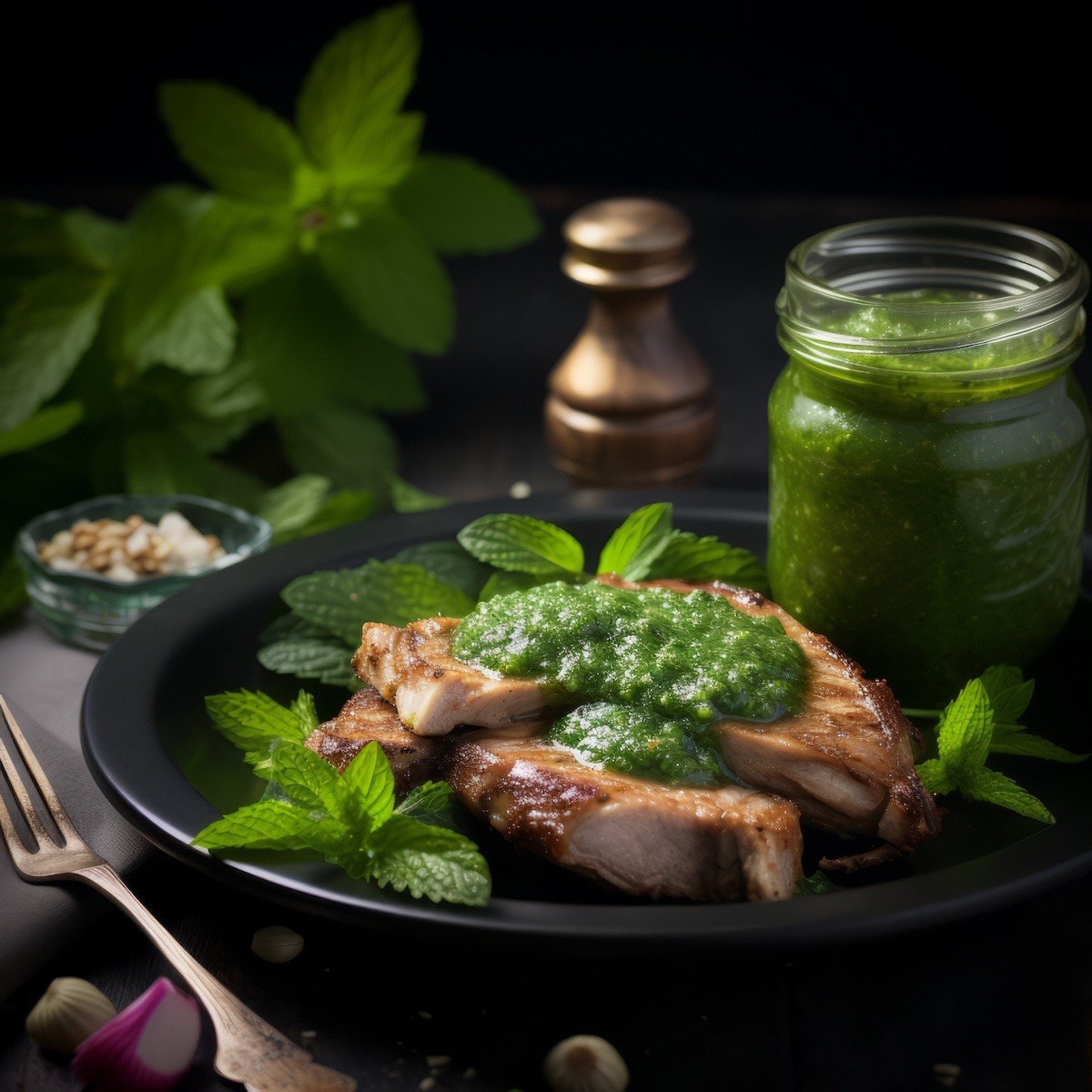
Some of My Favorite Sauce Recipes

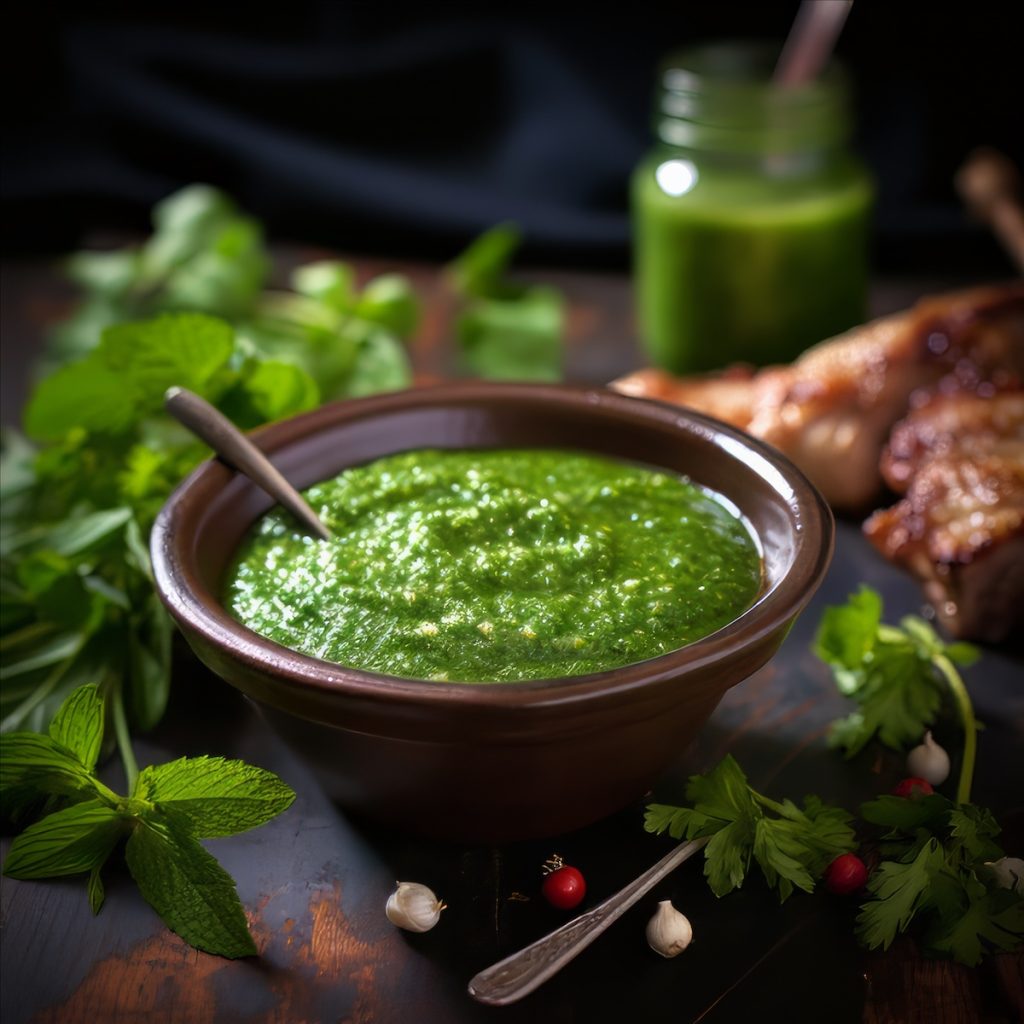






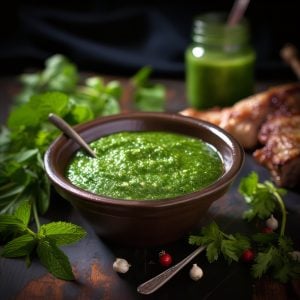
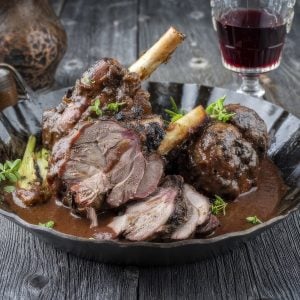
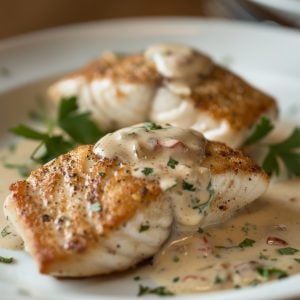

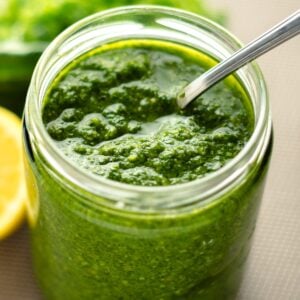
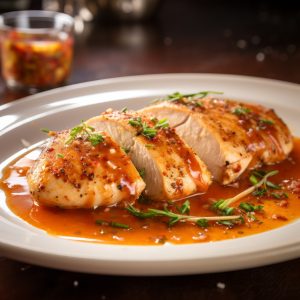
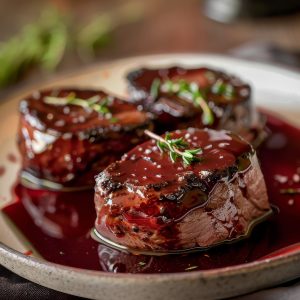


9 Responses
What are good side dishes to accompany a leg of lamb? We are considering using the mint sauce.
Roast potatoes are traditionally served along with green peas but you could add any vegetable that you like.
Roast potatoes are perfect. You should use Idaho Russet or some such floury potato. Parboil them for 10 minutes or so and dry thoroughly so the outside actually looks floury. Add to the pan that contains the fat dripping off the leg of lamb for the last 45 minutes of roasting time or until golden and crisp on the outside.
roast potato, sweet potato , pumpkin peas, parsnip yeah stuff like that
thanks i knew there was something i was doing wrong. i was using white vinigar and No sugar. that will make all the difference. i do lamb every christmas and usually my mother would make the mint sauce but she has forgot a few things in her old age and this is exactly the way she used to make it. i love it made this way it’s so much better and more exotic tasting then mint jelly. also a little over the mashed or roasted potatos is delish!!
I had a wonderful mint sauce years ago in New Zealand and I’m cooking lamb chops soon. I’ll struggle through the preparation of the mint sauce and dream of the Southern Alps
I was delighted to discover your recipe for mint sauce. I have an English background and spring lamb was always a favorite at our table as well. When I was only about 4 years old (I’m 63 now), my grandmother would have me “harvest” the mint from her garden. I would then follow her into her kitchen and see her skillfully chop the mint to a fine consistency. Her recipe, which I still make today was just like yours sans the sea salt. Today I have several mint plants growing in various locations in my garden. We are having a lamb party for 25 on Sunday and I can’t wait to try your exact version of the sauce! Thanks for sharing.
There is just something about the taste of lamb to other meats that is indescribable but you know what I mean. Lamb hands down is my favorite meat to eat, after that pork. Beef just doesn’t do it for me, it doesn’t have the taste that lamb and pork do.
We do not have access to fresh mint leaves so I ordered dried spearmint leaves as we have to have mint sauce on lamb and the commercial versions are unreasonably expensive here in the US. Are there any recipes for mint sauce using dried leaves? I suppose I will hydrate some and experiment but; I think the commercially prepared sauces (IE: Crosse & Blackwell)must use dried leaves. Thank You
Hi Gary, I am interested in hearing how your experiment with dried leaves turns out. I’m not sure if commercially prepared sauces use dried or fresh leaves but I’ll see what I can find out. Of course you can substitute dried leaves but you won’t get the same flavor as fresh.